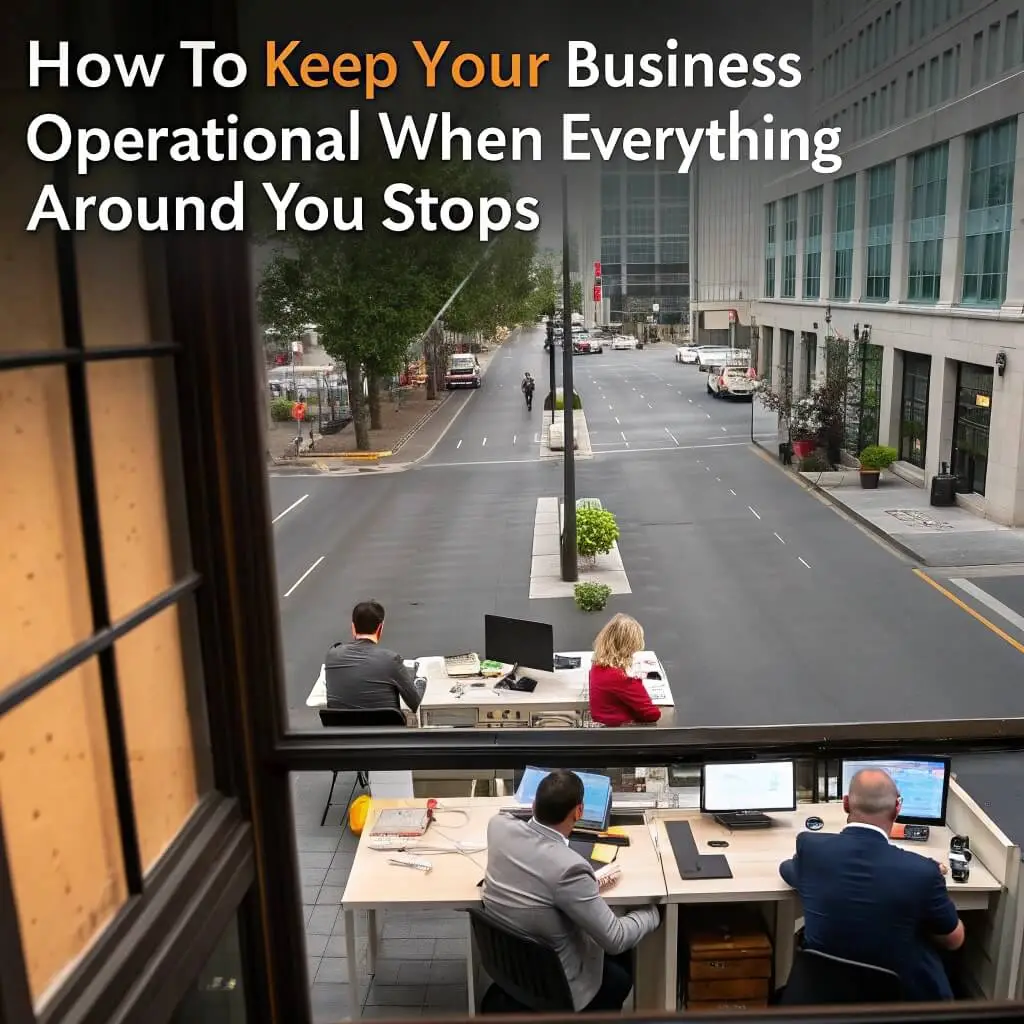Sometimes, it’s not your business decisions that cause disruption – it’s the world around you. Power outages, natural disasters, political instability, supply chain delays, or even a global pandemic can grind everyday operations to a halt.
While you can’t always prevent disruption, you can control your readiness. Staying operational during uncertain times takes planning, flexibility, and a few smart tools.
Here’s how to keep the lights on – even when the grid goes dark.
Secure the Basics of Power and Connectivity
At the most fundamental level, your business runs on power and the internet. Without these, communication and transactions come to a standstill. Having backup systems is no longer optional – it’s essential.
A portable power station can be a lifesaver when the grid goes down. These rechargeable battery systems can power everything from laptops and routers to point-of-sale terminals.
When paired with solar panels or charged during off-peak hours, they offer a clean and quiet solution that doesn’t rely on fuel.
Diversify Your Revenue Streams
Relying on one source of income or a single channel is a major risk during times of disruption. If that one area is hit – say, your physical storefront – your entire business suffers.
To stay resilient, look at how you can diversify. Can you offer digital versions of your services? Could you sell physical products through an online store, or monetize content via a subscription model? Expanding how and where you make money can cushion the blow if one stream gets blocked.
Build a Distributed Team or Network
During major events like storms or transportation strikes, central locations can become inaccessible. If all your staff are based in one region or office, a single road closure or power outage could sideline your entire team.
Remote-friendly setups are a practical hedge against local disruption. Having a team distributed across different cities or time zones gives you a broader operational net.
Even if one area is impacted, others can carry on. Invest in reliable remote tools, document-sharing systems, and asynchronous workflows so the team stays productive no matter where they are.
Keep Cash Flow Predictable
Cash flow is one of the first casualties in a crisis. Customers might delay payments, suppliers may demand upfront costs, and emergency expenses can eat into your reserves.
Create a buffer. Aim to have at least three to six months of operating costs saved. Consider offering subscription plans or retainers to customers, which bring in regular income even during slower periods.
And explore funding options before you need them – lines of credit, government grants, or invoice factoring can offer breathing room if sales dip.
Invest in Automation Where It Makes Sense
When your team is short-staffed or working irregular hours, automation can step in. It doesn’t replace human connection, but it does ensure critical functions continue even when no one’s at their desk.
Think: automated email responses, inventory restocks, recurring billing, or scheduled social posts. The less manual effort your core systems require, the more resilient your business becomes during unexpected gaps in staffing or oversight.
Have a Plan and Test It Regularly
It’s not enough to have a plan – you need to test it. A dusty document in a drawer won’t help when the pressure is on.
Run scenario drills: What happens if your office loses power? If your supplier disappears overnight? If you’re locked out of your systems for a day? Involve your team in these tests so everyone knows what to do, and make regular updates to reflect new threats or tools.
Being prepared doesn’t mean predicting every scenario – it means building the habit of response.
Future-Proofing Through Flexibility
The businesses that stay operational during times of disruption aren’t necessarily the biggest or the best-funded – they’re the most adaptable. They’ve put safeguards in place not because they expect the worst, but because they understand that stability comes from options.
Being ready means building systems that bend but don’t break. It means training teams to think for themselves. And it means having backups for your backups – even if that’s as simple as keeping a portable power station in the supply closet.
When everything around you pauses, you don’t have to. With the right tools, mindset, and systems, you can keep going – and help others do the same.
